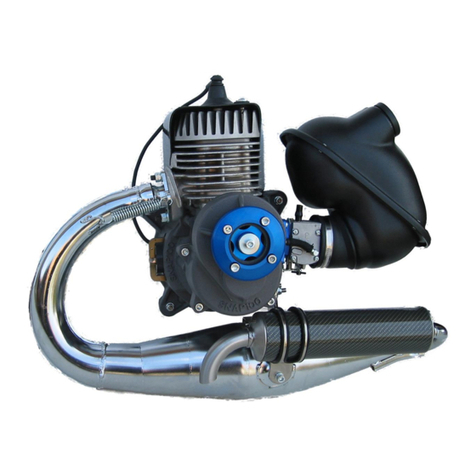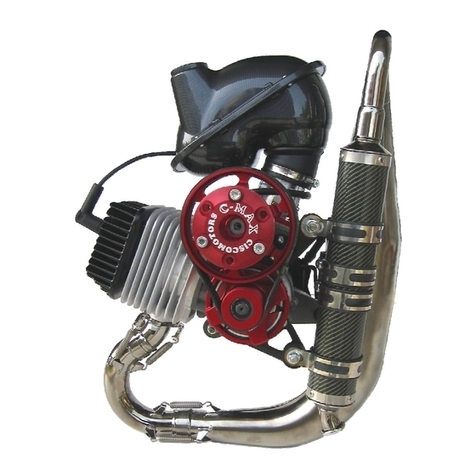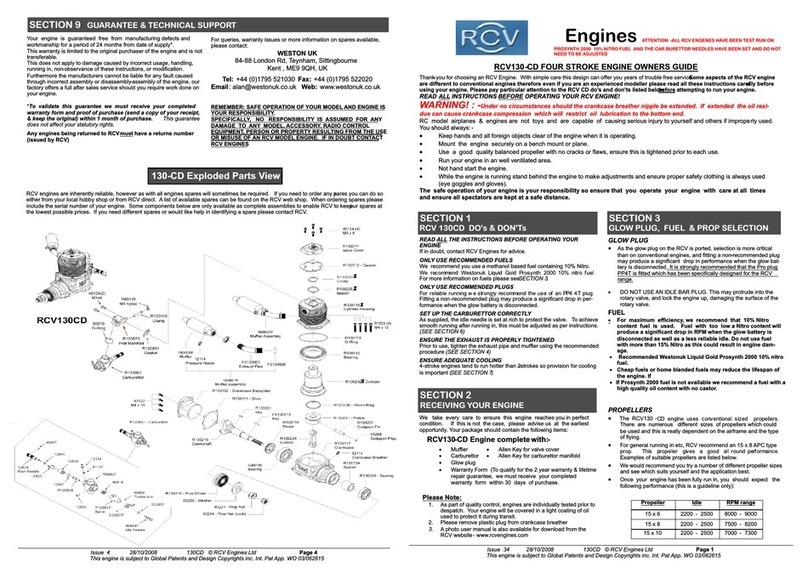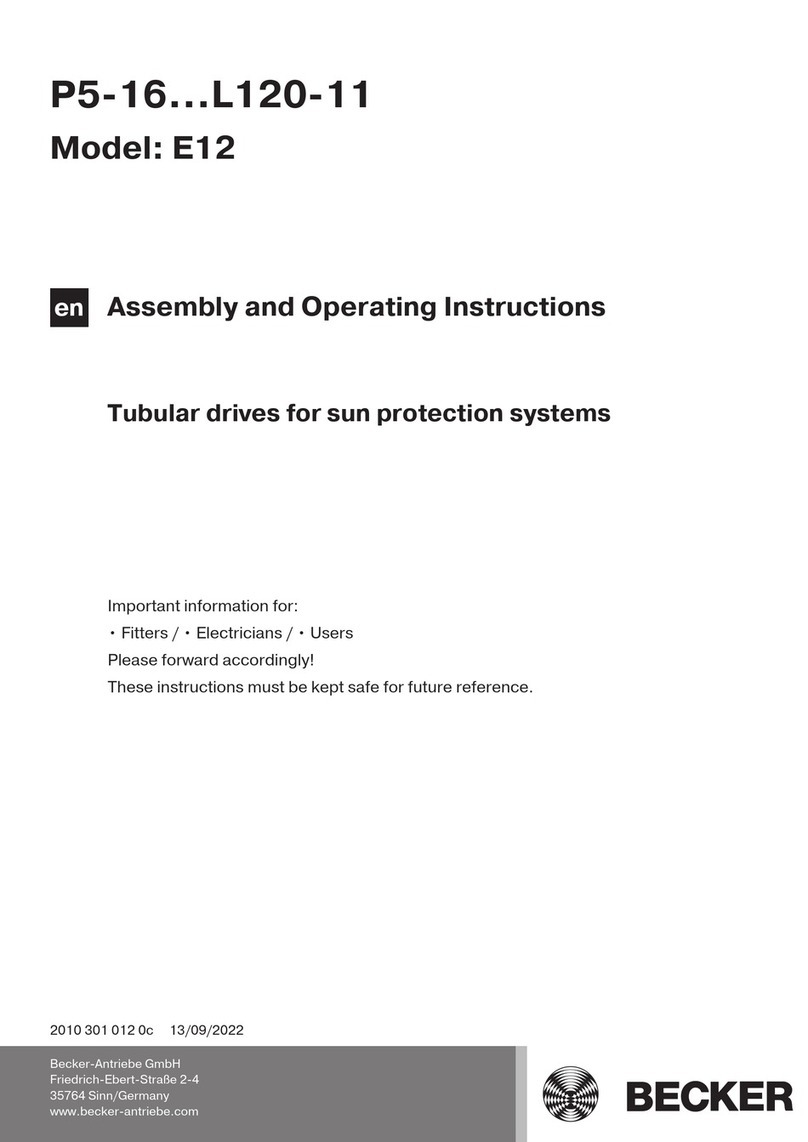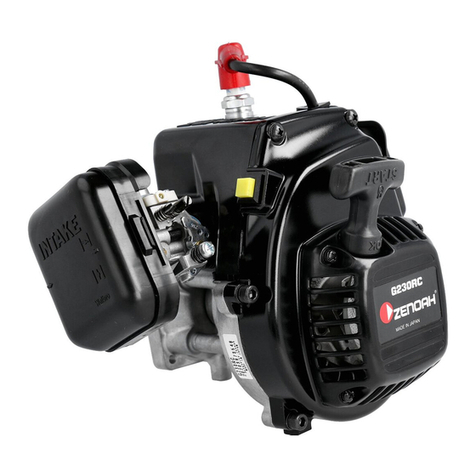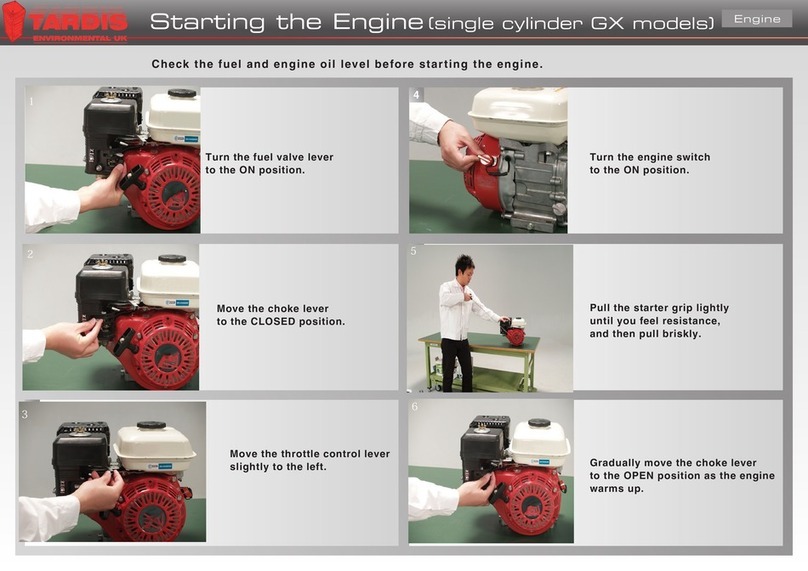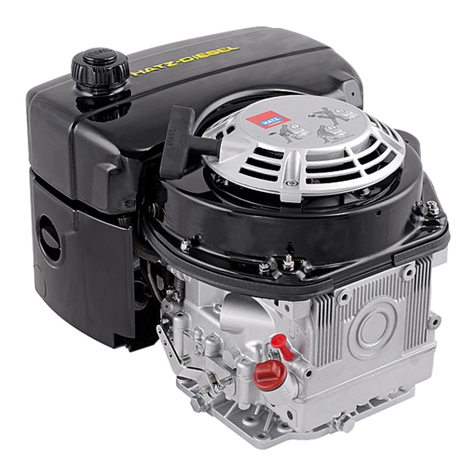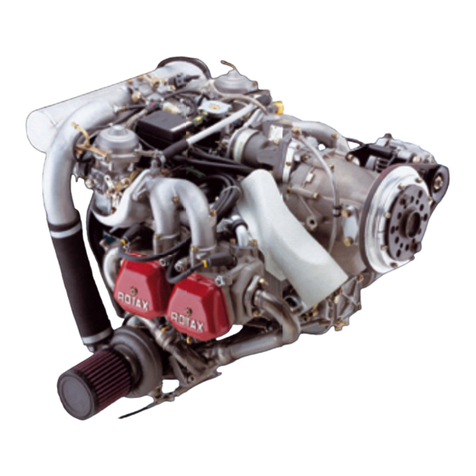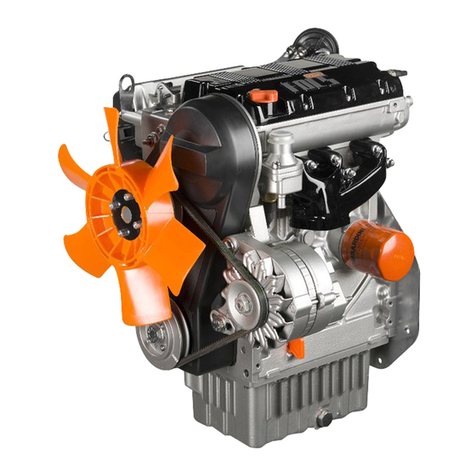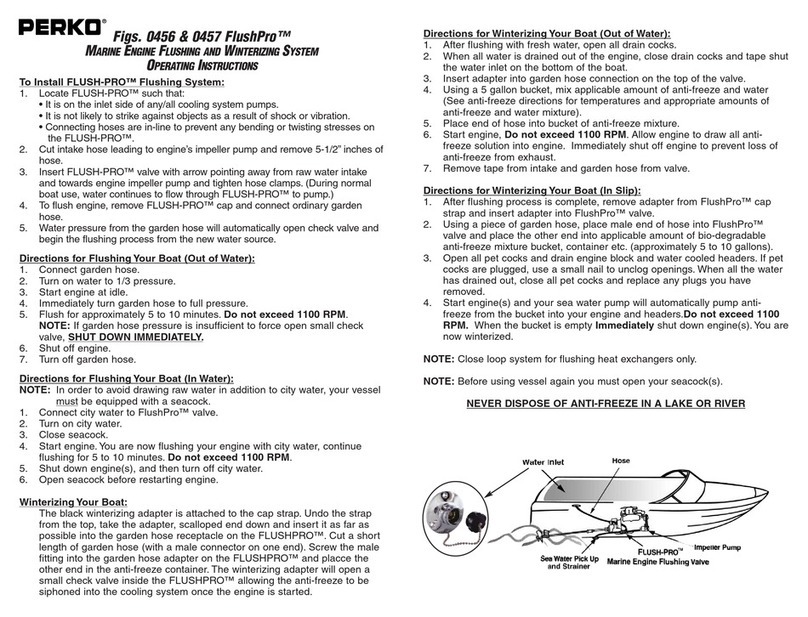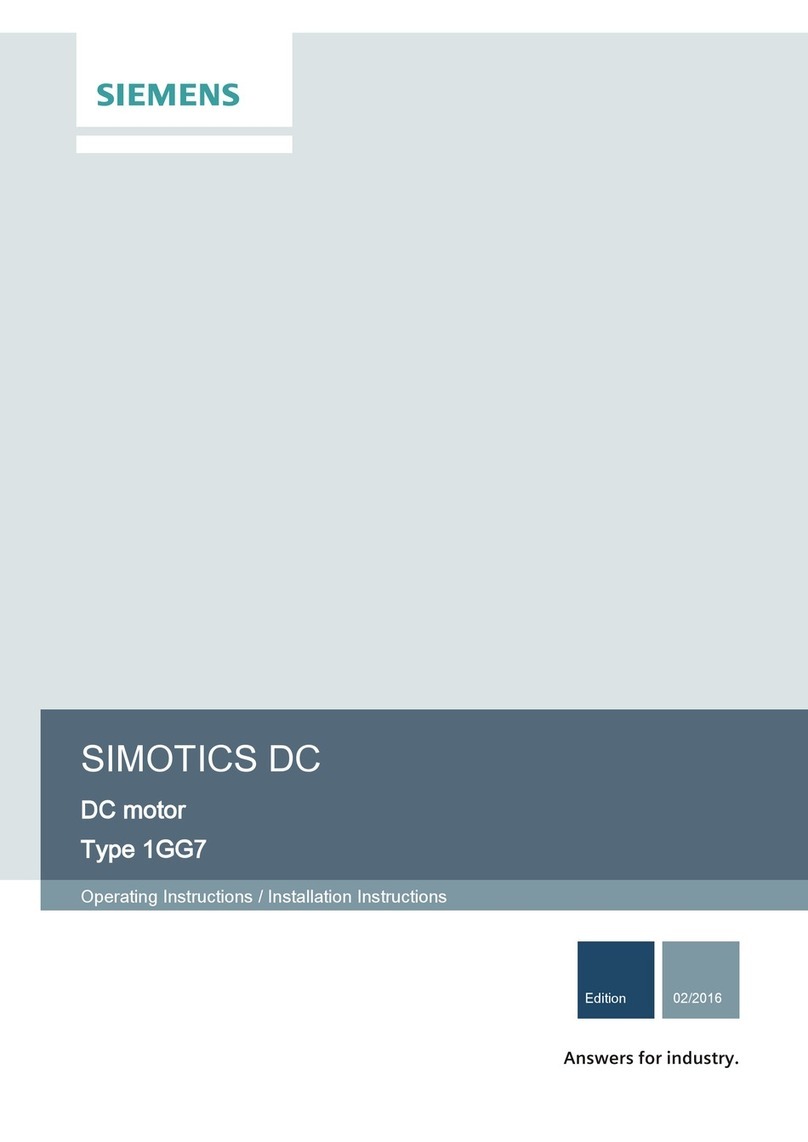Ciscomotors BullMax 250 User manual

Ciscomotors
Bull Max
SIMPLIFIED MAINTENANCE MANUAL
All information in this publication is based on latest specification’s product available at the time
of approval for printing.
CISCOMOTORS reserves the right to make changes at an time without notice and without
incurring an obligation.
No part of this publication ma be reproduced without written permission.
CISCOMOTORS 2016 .

INDEX Page 2
1. OPERATING INSTRUCTIONS Page 3
• 1.1 Basic operation Page 3
• 1.2 Start engine Page 4
• 1.3 Running in procedure Page 6
2. SPECIFICATIONS Page 7
• 2.1 Engine installation on chassis Page 7
• 2.2 Technical characteristics Page 8
3. MAINTENANCE
• 3.1 General service information Page 9
• 3.2 Routine cleaning Page 9
• 3.3 Maintenance schedule Page 10
4. STORAGE Page 11
5. ASSEMBLY/DISASSEMBLY STARTER Page 12
6. REGULATION BELT TRANSMISSION Page 13
7. REGULATION CARBURATION Page 14
8. ELECTRICAL SCHEDULE Page 15
9. TROUBLESHOOTING Page 16
• 9.1 The engine don’t start Page 16
• 9.2 Engine lacks power Page 16
• 9.3 Excessive vibrations of the engine Page 17
10. TORQUE VALUES ENGINE Page 18

Page 3
1. OPERATING INSTRUCTIONS
1.1 BASIC OPERATION
FUEL
• Bull Max has two-stroke engine that
requires a gasoline-oil mixture.
• Use gasoline with a pump octane
number of 92 or higher .If “knocking” or
“pinging” occurs, tr a different brand of
gasoline or a higher octane grade.
• To mix gasoline and oil in a ratio of
40:1. Prepare the fuel mixture in a clean
container fig. 1 , and shake until
thoroughl mixed before filling the fuel
tank.
• USE A GOOD QUALITY OF
SYNTHETIC 2-STROKE OIL
CAUTION
To much oil will cause excessive smoking and
spark plug fouling. Too little oil will cause
engine damage or premature wear. Mix fuel
in a ratio of 40 parts gasoline to 1 part oil
(40 1)
•
Vegetable oils separate from gasoline
more easil than mineral oils, especiall
in cold weather. It is advisable to use
s nthetic oil.
CAUTION:
• Do not mix vegetable and mineral based
oils.
WARNING
• Gasoline is extremely flammable and is
explosive under certain conditions.
Perform this operation in a well-
ventilated area with the engine
stopped. Do not smoke or allow flames
or sparks in the area where gasoline is
drained or stores and where the fuel
tank is refuelled.
FUEL 92/98 octane
Synthetic oil
litres
cl
1
2
3
4
5
10
0,25
0,5
0,75
10
12,5
25
Figure 1

Page 4
1.2 START ENGINE
WARNING
• Never run the engine in an closed area. The exhaust contains poisonous carbon
monoxide gas that can cause loss of consciousness and may lead to death.
• Attention to start the engine without the reducer provokes the outbreak of the clutch
and can cause injury or damages.
• Never run the engine without propeller.
• The starter attempt can carry to the spin of the propeller and therefore to possible
lesions.
• The motor running emits disturbs electromagnetic
Version manual starter
1. To carr in a pressure the circuit of the
gasoline, to help itself pressing the
diagramm (Fig.2)
2. Don’t engulf the engine but make sure
the gasoline goes in intake pipe.
3. To pull the starter and delicatel pull
just after the hard point (tr repeatedl
for be sure).
4. Pull with energ the handgrip and speed
slightl .
5. In case of start failed to repeat again
the operation .
6. After starter engine heat it 2/3 minutes
speeding from 3000 to 4000 turns max.
Start the engine to warm:
1. Pull the handgrip with energ without
speed.
Flooding of the engine
• WARNING • In case of flooded
engine, throw open completely the
throttle during the starting phase.
CAUTION This operation is
Dangerous, must be made with the
engine tied to a support to prevent it
from hitting the user.
Version electric starter:
1. To carr in pressure the circuit of the
gasoline, to help itself pressing the push-
button (Fig.2)
2. Don’t engulf the engine but make sure
the gasoline goes in intake pipe.
3. Act on the start button without speed for
5 or 6 turns engine.
4. In case of start failed to repeat again the
operation.
Start the engine to warm :
1. Pull the handgrip with energ without
speed.
Flooding of the engine
• WARNING • In case of flooded
engine, throw open completely the
throttle during the starting phase.
CAUTION This operation is
Dangerous, must be made with the
engine tied to a support to prevent it
from hitting the user.

Page 5
Version centrifugal Clutch
1. To carr in a pressure the circuit of the gasoline, to help itself pressing the diagramm (Fig.2)
2. Don’t engulf the engine but make sure the gasoline goes in intake pipe.
3. To pull the starter and delicatel pull just after the hard point (tr repeatedl for be sure).
4. Pull with energ the handgrip and speed slightl .
5. In case of start failed to repeat again the operation .
6. After starter engine heat it 2/3 minutes speeding from 3000 to 4000 turns max.
Start the engine to warm:
Pull the handgrip with energ without speed.
Flooding of the engine
WARNING • In case of flooded engine, throw open completely the throttle during the
starting phase. CAUTION This operation is Dangerous, must be made with the engine tied to
a support to prevent it from hitting the user.
Figure 2
Stop the engine
To press the stop button of engine until the engine stop completely
.

Page 6
1.3 RUNNING-IN PROCEDURE
Following proper break-in procedure helps censure that some of the most important and
expensive components on our new Bull Max will provide maximum performance and service
life. (Also follow proper run-in procedure for a newl rebuilt engine)
1. Do not hold the throttle in one position for more than a few seconds. It’s better to
roll the throttle on and off, without getting too high altitudes and forcing the
engine.
2. Use the motor for features of 10 minutes at a time and to leave to cool it.
3. After 5 hours of use or approximatel 20 litres of gasoline the motor should be
broken in.
4. This same procedure should be followed each time
• Piston is replaced
• C linder is replaced
• Crankshaft or crank bearings are replaced
RUNNING-IN PROCEDURE
1. 3 min. 4000 rpm then let to cool. Repeat 2 times
2. 3 min. 5000 rpm then let to cool. Repeat 2 times
3. 3 min. 6000 rpm then let to cool. Repeat 2 times
4. 2 min. 7000 rpm then let to cool. Repeat 2 times
5. 1 min. 7600 rpm then let to cool. Repeat 2 times
6. Check the bolts after each engine cooling
7. First flight not keep the accelerator in the same position for a long time.
8. After 4 hours of use, or about 20 liters of gasoline, the engine is run in.

Page 7
2. SPECIFICATIONS
2.1 ENGINE INSTALLATION ON
CHASSIS
Figure 3

Page 8
2.2 TECHNICALS CHARACTERISTICS
Engine Bull Max
T pe 2 strokes air
Disposition c linder Mono c linder
Bore max 70mm
Stroke max 60mm
Displacement 230cc
Compression ratio 11 : 1
Maxim Power 24 kw (33cv) 7600 rpm
Max turn of engine 7800 rpm
Electrical system
Ignition Inductive coil
Rotor Neod nium Magnet
Spark plug standard Ngk B8BS
Spark plug summer +30° c
Ngk B9BS
Starter Manual / Electric
Carburettor
T pe Walbro WB
Transmission
Reduction Pulle /Pinion
Reduction ratio 1/2,6 – 1/2,8
Exhaust
T pe Expansion chamber
Silencer Glass wool
Support engine
T pe N.4 Silent-block
The standard carburation
Temperature 10°c
P 1024 Mb
UR 50%
Altitude (S.L.M.) 50 m

Page 9
3. MAINTENANCE
3.1 GENERAL SERVICE INFORMATION:
• Wear gloves and glances when ou make the maintenance;
• Do not perform maintenance while engine is running. Injur to our fingers, hands or head
ma result ;
• Perform maintenance on firm, level ground, using hard work plain , and not directl on
chassis;
• Alwa s install new gaskets, o-rings, piston pin clips, rings etc .when reassemble some parts.
• When tightening bolts, nuts or screw, start with the larger diameter or inner fasteners, and
tighten them to the specified torque using a criss-cross pattern;
• Use genuine Ciscomotors parts when maintenance our Bull Max
• Clean parts in not-flammable cleaning solvent when disassembling. Lubricate an sliding
surface, o-rings and seals before reassembling.
W
WA
AR
RN
NI
IN
NG
G
Gasoline or low flash point solvents are highly flammable or explosive and must never be
used for cleaning parts . Fire or explosion could result.
• After reassembling, check all parts for proper installation and operation
NOTE:
• Specification are listed chapter 2.
3.2 ROUTINE CLEANING
• If the Bull Max is onl little dirt to clean up it with clean dusts cloth without solvents
• If the Bull Max is much dirt to clean up it with biodegradable detergents and not with
solvents, lubricate where is necessar .
Engine Number
Figure B

Page 10
3.3 MAINTENANCE SCHEDULE
FREQUENCY
INSPECT
REPLACE
Before and after each use
All screw nuts, bolts correctl
tighten, silent-block in, and
check carburation.
Belt transmission tension
Ever 100 hours
Clean air filter Transmission belt
Spark plug
Ever 200 hours C linder head decarbonizing
Ever 500 hours Thermical group .
Piston , Needle cage
Fuel diaphragm carburettor ,
Spark plug.Oil seal crankshaft,
BearingS transmission.
Each ear All rubber and plastic
components.

Page 11
4. STORAGE
Extended storage such as for winter, requires that ou take certain steps to reduce the effects of
deterioration from not use of our Bull Max. In addition necessar repairs should be made before
storing our Bull Max: otherwise these repairs and clean ma be forgotten b the time our Bull Max
is removed from storage.

Page 12
5. ASSEMBLY/DISASSEMBLY OF THE STARTER
1. Remove 4 screws (Fig.18)
2. Remove the screw (Fig.20) for to arrive
to the pulle
3. Remove the pulle (Fig.21)
4. Control the screws (Fig.19) are in a
good conditions and locked.
1. Install the pulle and tighten the screw
(pict. 20) to the specified torque
TORQUE 15Nm( 1,5 kgf/m)
2. Insert the starter in 4 screws (Fig.19)
3. Tighten the screws (Fig.18) to the
specific torque using light locking agent
TORQUE 12Nm (1.2 kgf/m)
Figure 18
F
Figure 21
Figure20

Page 13
6. REGULATION BELT TRANSMISSION
The tension of belt must be done ver carefull
1. Slightl little the 4 fix screws of bracelet (Figure 32)
2. Tighten the 4 screws torque of 20 Nm (0,2kg / m) slight tension
3. Insert an Allen ke 8 m/m in the seat Figure32-1 and rotate counter-clockwise torque of
400 Nm (40kg / m)
4. Tighten the 4 screws using the cross method the specified torque
• Torque 12Nm (1,2 kg/m)
Figure 32
CAUTION
1. Tension too taut it’s cause of earl usur of pulle
2. Tension too loose it’s cause of exessive consumpion of belt and difficult to start the engine.
• Torque 50Nm (5 kg/m)
Fig.ure32.1

Page 14
7. CARBURATION REGULATION
Figure 35
1. Regulation min.throttle engine
2. Regulation gasoline/air min. (L)
3. Regulation gasoline/air max (/H)
Standard regulation BullMax carburator Walbro WB37
In case problems of wrong carburation , replace the originals levels.
Screw regulation of min. 1 turn from all closing. . (Figure35 point 2)
Attention regulation of carburation must be made at warm motor.
1. Start the engine.
2. To warm the motor for 4 or 5 minute to the regimen of spin of 3500/4000rpm;
3. Bring engine at full power for 10 seconds
4. Regulate the screw of max jet H, ((Figure35 point 3) from 1+1/2 to 2 turn from all closing.
5. Regulate the screw of the minimal jet L, (Figure 35 point 2)from 4/5 to 1 turn, to put the
motor to 4000 rpm, to screw or to unscrew the screw until when the motor turns cleaned up
and does not mutter;
6. To leave the motor for some second ones at minimum, to accelerating normall , now the
motor must quickl accelerate without mumbling or to come less.
7. To regulate the lessened motor spin of the 1800/2000 rpm. (Figure 35 point 1) Bull Max

Page 15
8. ELECTRICAL SCHEDULE
Electric starter with recharge battery

Page 16
9. TROUBLESHOOTING
9.1 THE ENGINE DON’T START
CHECK
POSSIBLE CAUSES
SOLUTION
Check if fuel is jetting to the
carburettor
No fuel in tank
Fill tank for fueling
Clogged fuel line or fuel filter
Replace and clean
Diaphragm fuel pump broken
Replace the diaphragm
(Figure 5)
Check electric
The engine stop switch is to ON
Move it on OFF
Fault spark plug
Replace
Broken or shorted ignition coil
Replace
9.2 ENGINE LAKS POWER
CHECK
POSSIBLE CAUSES
SOLUTION
Check the carburation
Fuel air mixture to lean
Unscrew the L screw
(Figure 35- 2)
Fuel air mixture to reach
Tighten the L screw
(Figure 35- 2)
Clogged fuel line or fuel filter
Replace or clean
Clogged Air filter
Replace or clean)

Page 17
9.3 EXCESSIVE VIBRATIONS OF THE ENGINE
CHECK
POSSIBLE CAUSES
SOLUTION
Silent-block engine
Excessive wear, holder rubber
Replace (Max 65 Sh)
Prop out of balance
Balance or replace

Page 18
10. TORQUE VALUES ENGINE
ITEM
Thread diam. x
pitch
Torque
Kg-m
Cap screw propeller hub M6 M 6 x 1,0 1.2
Cap screw propeller hub M8 M 8 x 1,25 1.6
Spark plug M14 x 1,25 1,8
Cap screw crankcase starter M 6 x 1 1.2
Bolt c linder head M 8 x 1,25 1,6
Screw transmission eccentric M 6 x 1,0 1,0
Bolt silent-block exhaust M 8 x 1,25 1.6
All bolts M 6 x 1 1
All bolts M 5 x 0.8 0.8
*Bolts starter M 10 x 1,25 3,0
Bolts pinion transmission M 12 x 1.25 4,0
* Appl locking agent
Table of contents
Other Ciscomotors Engine manuals
